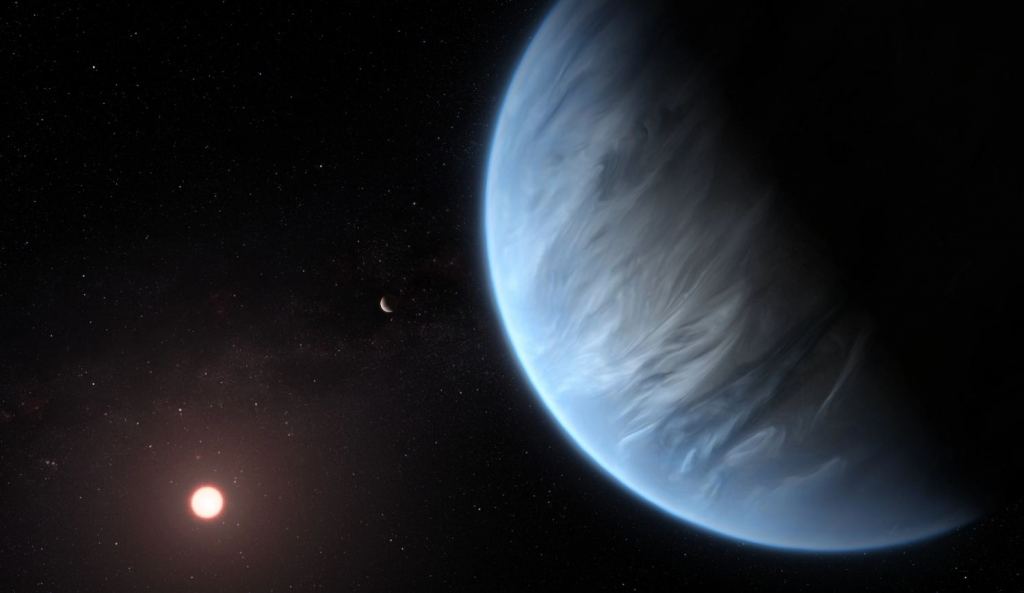The Seven Most Intriguing Worlds to Search for Advanced Civilizations (So Far)
By Andy Tomaswick
Sometimes, the easy calculations are the most interesting. A recent paper from Balázs Bradák of Kobe University in Japan is a case in point. In it, he takes an admittedly simplistic approach but comes up with seven known exoplanets that could hold the key to the biggest question of them all – are we alone?
Dr. Bradák starts with a simple premise – there is a chance that life on Earth might have started via panspermia. There is also a case that panspermia was intention – an advanced civilization could theoretically have purposefully sent a biological seed ship to our local solar system to spread life here, essentially from scratch.
With those admittedly very large assumptions in place, Dr. Bradák works out a few characteristics about the planets that could have been the starting point for such a civilization. First, he assumes, as much of the astrobiological community does, that for an advanced civilization to arise on a planet, that planet has to be at least partially covered in an ocean.
To meet that requirement, the planet has to be both the right size and the right temperature. The two size categories of exoplanets that Dr. Bradák originally selected were “terrestrial” – planets similar to Earth, including so-called “Super-Earths” – and “sub-Neptunes” – planets that are significantly larger than Earth but smaller than the ice giant in the outer fringes of our solar system.
Any such exoplanet also has to be in the habitable zone of its parent star. That alone dramatically narrows the potential field of planetary candidates. For simplicity’s sake, Dr. Bradák also eliminates sub-Neptunes as a potential planetary class. However, one other factor comes into play as well: age.
We know it took around 4.6 billion years for life to evolve to a point where it could theoretically send objects to other star systems – as we have now with Voyager. Since the original planet would also have to have evolved such a civilization, it would be double the time for its minimum age – or 9.2 billion years old.
Dr. Bradák adds some additional argument that lowers the required age of the system – and he also assumes that the planetary system of a star forms at a similar time gap as our planetary system did. The distance to most of these stars is inconsequential on the scale of billions of years, so the travel time for the seed ship was discounted in this calculation.
After all that pruning, Dr. Bradák turned to NASA’s Exoplanet Archive, which currently contains 5271 known exoplanets. Of those 5271, only 7 meet the specified age, size, and habitable zone placement criteria. In other words, according to our current knowledge of exoplanets and how life evolved, only a few planets could potentially have been the starting point for an intentional panspermia campaign.
One planet in particular stands out – Kepler-452 b, which has a star similar to ours and an orbit similar to ours. That system is only 1,400 light years away, relatively close by astronomical standards. If nothing else, it points to that system as a potentially interesting focal point for exoplanet surveys, including assessments of exoplanet atmospheres. However, we’ll likely have to wait for the next generation of grand telescopes.
For now, this was an interesting, though brief, speculative exercise. Astronomers are always looking for exciting things, and this paper contributes to the arguments about why it’s so important to spend time looking in detail at some of the exoplanets we already know about.
Learn More:
B. Bradák – A BOLD AND HASTY SPECULATION ABOUT ADVANCED CIVILIZATION-BEARING PLANETS
APPEARING IN EXOPLANET DATABASES
UT – A Super-Earth (and Possible Earth-Sized) Exoplanet Found in the Habitable Zone
UT – A New Place to Search for Habitable Planets: “The Soot Line.”
UT – Want to Find Life? Compare a Planet to its Neighbors
Lead Image:
Artist’s illustration of a habitable planet.
Credit – Wikipedia / VP8/Vorbis
The post The Seven Most Intriguing Worlds to Search for Advanced Civilizations (So Far) appeared first on Universe Today.

April 9, 2024 at 11:59PM
via Universe Today read more...

Post a Comment